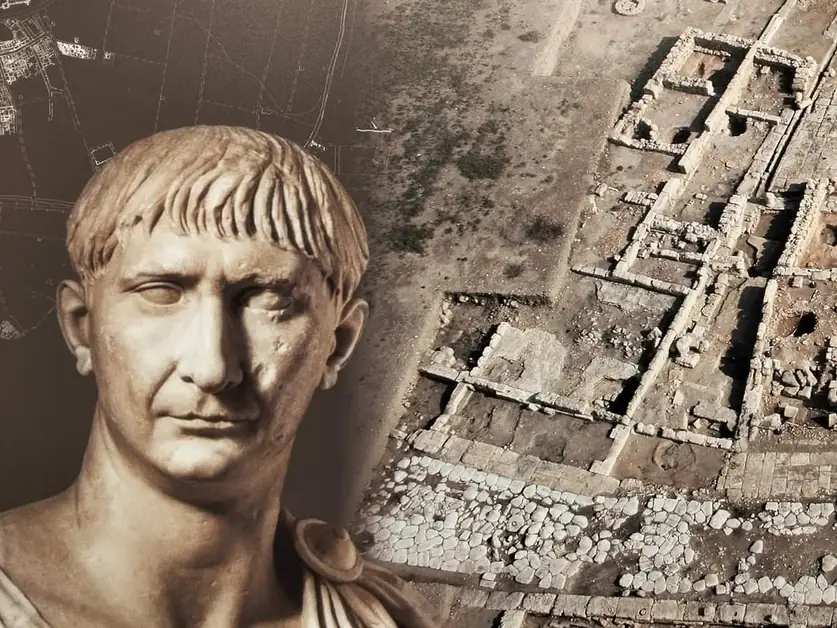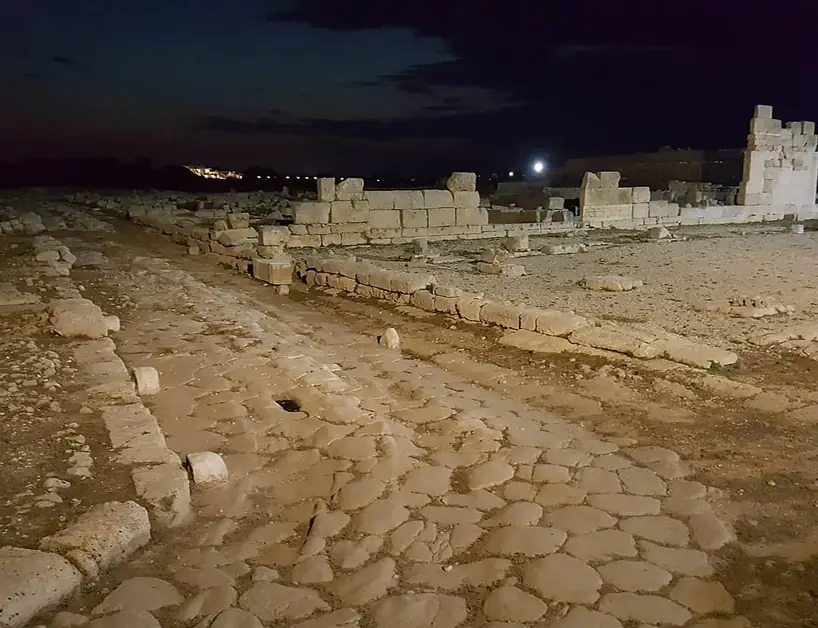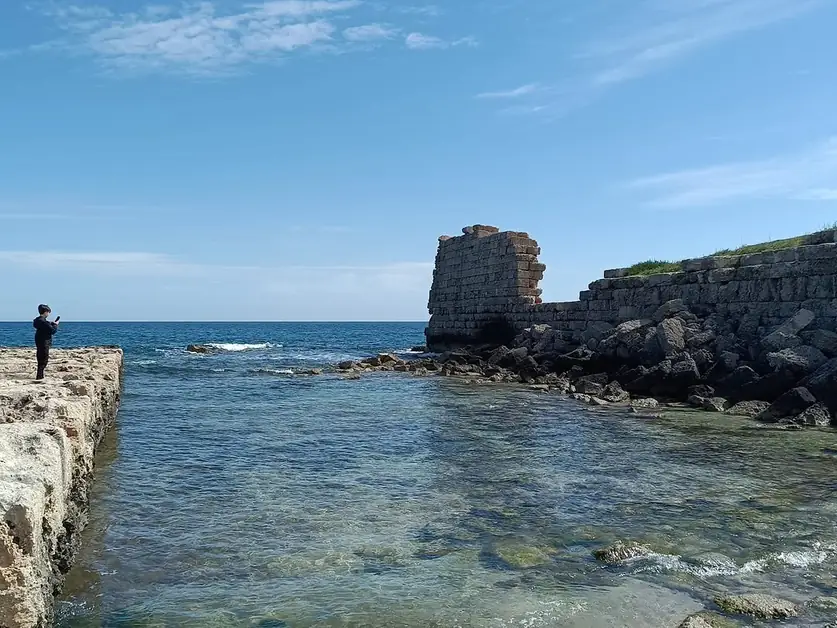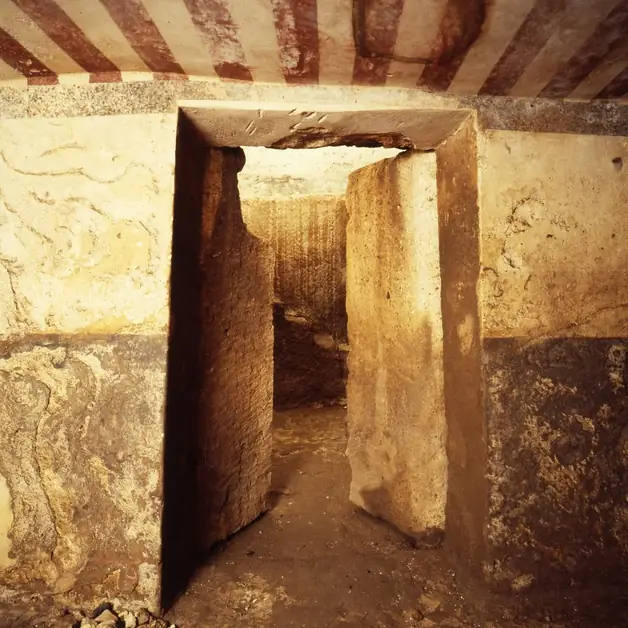Egnazia an archaeological treasure to discover
The Archaeological Park of Egnazia is a treasure of ancient Puglia, a journey through history and nature.

What is the location of the Archaeological Park of Egnazia?
The Archaeological Park of Egnazia, located along the Adriatic coast between Monopoli and Fasano, represents one of the most fascinating and complete archaeological sites in southern Italy. It covers an area of about 15 hectares, and within it holds the remains of an entire ancient city in the open air, with evidence spanning over three thousand years of history, from the Messapian foundation to the Roman and early Christian periods.
Those who visit Egnazia embark on a true journey through time, surrounded by a Mediterranean landscape that unites history, sea, and nature. The park, perfectly integrated with the National Archaeological Museum "Giuseppe Andreassi," offers an immersive experience, rich in detail, but also accessible to all thanks to explanatory panels and well-marked paths.
What is the history of the ancient city of Egnazia?
The ancient Gnathia, later called Egnatia by the Romans, was located at a strategic point on the Adriatic coast of Puglia, where the sea created a small natural inlet perfect for a port. This privileged position made the city a major commercial hub in the connection between the West and the East. Founded in the 16th century BC, Egnazia went through all the main historical phases of ancient Puglia: the Iapigian culture, the Messapian civilization, the Roman age, and finally, the early Christian period. Today, walking among the ruins, it is possible to read in the stone the long evolution of the site: an open-air museum that tells how the ancient Puglians lived, built, and defended themselves.
What is the significance of the Acropolis of Egnazia?
The visit to the Archaeological Park begins at the Acropolis, the highest part of the hill that dominates the entire area. Here are the oldest remains of the city, with traces dating back to the Middle Bronze Age, when the site was formed by circular huts made of wood and clay. Over time, the Acropolis became the political and religious center of Egnazia. Important buildings can be found here, such as the Traian Sanctuary dedicated to Venus, built during the Roman imperial age, and the Roman Forum, the heart of public and administrative life in the city. Next to the forum stands a early Christian basilica, a testament to the transition from paganism to Christianity. The atmosphere here is unique: the height overlooks the sea, offering a spectacular view and a deep sense of the connection between the ancient inhabitants and the Adriatic.
What is the importance of the Messapian city walls?
Descending from the Acropolis, one encounters the Messapian city walls, one of the most imposing and best-preserved elements of the Park. These are megalithic walls dating back to the 4th-3rd century BC, built with enormous blocks of limestone, without the use of mortar. These walls defended the city from the land side, while the sea provided a natural barrier on the opposite side. The urban layout of Egnazia, in fact, followed a semicircular structure: the fortifications enclosed the city only towards the interior, leaving the landing free. Walking along the preserved sections, one can perceive the impressiveness and mastery of Messapian construction techniques, which have withstood for over two thousand years.
What can be found in the necropolises of Egnazia?
Outside the walls, the monumental necropolises of Egnazia extend, among the richest and most interesting in Puglia. The tombs, carved into the rock or built of stone, belong to different epochs and types: pit, semi-chamber, and chamber tombs. Some are decorated with frescoes and stone markers, true funerary monuments. The finds – vases, jewelry, weapons, everyday objects – tell the life of the Messapi and Romans who inhabited the city. Among the most famous discoveries is the Tomb of the Pomegranates, from the 4th century BC, frescoed with plant and symbolic motifs, now visible inside the Museum of Egnazia. The necropolises represent a true archaeological archive, allowing the study of funerary customs, religious rites, and decorative art of a distant yet fascinating world.
What is the significance of the Via Traiana?
One of the most suggestive aspects of the Park is the path along the ancient Via Traiana, the great consular road built by Emperor Trajan in the 2nd century AD to connect Benevento to Brindisi. The road crossed Egnazia and favored its commercial traffic, making it a major stopping point (statio). Along this stretch, one can admire the remains of public buildings such as the forum, the amphitheater, the cryptoporticus, and a furnace used for the production of ceramics and building materials. The Roman forum was the main square of the city, paved with large blocks of tuff and surrounded by Doric porticoes. The amphitheater, on the other hand, hosted performances and public ceremonies, with a structure built in opus africanum. The cryptoporticus – an underground gallery – likely served as a storage or deposit place for goods and supplies. Walking along the Via Traiana means reliving the era when merchants, soldiers, and pilgrims crossed Puglia to reach the East.
What do the Roman domus of Egnazia reveal?
Another point of great interest is the Roman domus, the private houses belonging to the wealthiest citizens of Egnazia. The mosaic floors and the remains of wall decorations are still recognizable. These houses, arranged around internal courtyards, show how daily life unfolded in the city during the imperial era. Some domus preserve geometric and floral mosaics, similar to those found in other Roman cities of Puglia, such as Brindisi or Lecce, but with stylistic traits unique to the Messapian area.
What is the value of the early Christian complex?
In the 4th-6th century AD, Egnazia experienced a new phase as a bishopric city. In the Park, one can admire the remains of a large early Christian complex, with a basilica and a circular baptistery used for Christian initiation rites. The floor mosaics and fragments of decorations testify to the transition from the Roman world to Christianity, during a historically significant moment of spiritual transformation. This area, close to the sea and protected from the winds, represents the last great season of prosperity for the city before its gradual abandonment in the 13th century.
How is the visit to the Archaeological Park conducted?
The entire Archaeological Park of Egnazia is designed to offer visitors a complete experience: the paths are well marked, with explanatory panels illustrating the historical and architectural contexts. The visit can be done independently or with authorized guides, who help to understand the more technical and curious details. The surrounding landscape, made up of centuries-old olive trees, dry stone walls, and Mediterranean scrub, enriches the visit with breathtaking views of the Adriatic Sea. From the highest point of the Acropolis, one dominates the entire area, and on clear days one can even glimpse the distant coast of Greece, with which Egnazia had constant relations in ancient times.
What is the connection with the "Giuseppe Andreassi" Museum?
The Park is closely linked to the National Archaeological Museum "Giuseppe Andreassi," which stands right next to the entrance. Here are preserved the finds from the excavations, particularly those from the necropolises, the domus, and the sanctuaries. The museum completes the visit to the site, offering a clear view of daily life, religion, and the arts of Egnazia.




